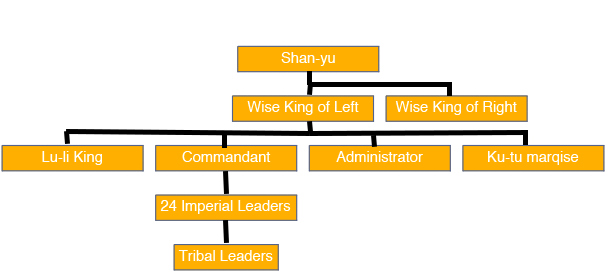Early Xiongnu (Hsiung-nu)-China Relations, 215 BCE -200 BCE
Pastoral Nomadic Cavalry technology complex
Horse domestication and bit, 3500 BCE
Jacket, pants, belt and boots, 10th c. BCE
Compound bow, 9th c. BCE
Saddle, 6th c. BCE?
Reigns, bridle, 6th c. BCE?
Survival strategy
Horses
Military skills
Pastoral Nomad-Warring States China Interactions
Mounted cavalry “Hardware Upgrade”
Traditionally attributed to King Wuling of Zhao, 307 BCE
Qin Kingdom’s Campaigns to Unify China, 231-221 BCE
First Emperor of China
King Zheng of Qin, r. 246-221 BCE
Qin Shi Huangdi (First Emperor of Qin), r. 221-210 BCE
Qin Dynasty 221-206 BCE
Northern Campaign, 215 BCE
“300,000 soldiers”
Defensive walls linked
“1 million” die
*Xiongnu Empire, 209 BCE to 155 CE
*Modun (Golden), Modu (Whitfield), Maodun (Name in Chinese sources), r. 209-174 BCE
Modun’s centralization
*Chanyu or shanyu “established by Heaven”
Xiongnu Administrative “Software Upgrade”

Di Cosmo hypothesis
Connected to Qin’s northern campaign
Rapid Fall of Qin
Death of First Emperor, 210
“Second Emperor of Qin”
r. 210-207 BCE
Rebellion of Chen Sheng & 900 conscripts, 209 BCE
Liu Bang (Emperor Gaozu)
Founds Han Dynasty in 202 BCE
Han Dynasty (202 BCE-220 CE)
Han Gaozu, r. 202-195 BCE
Xiongnu-Han Relations
Xiongnu defeat Han Gaozu at Pingcheng , 200 BCE
*“Alliance of Peace and Kinship,” or heqin 198 BCE (Golden, p. 27)
Annual payments of silk to Xiongnu
Han Princess as wife for Shanyu
Both states as equals
“Great Wall” as boundary
Whitfield, “A Pair of Steppe Earrings,” pp. 9-33
1. According to Whitfield (pp. 11-12), how did early Chinese ideology depict their relationship with foreigners to the north and later the Xiongnu?
“All men under heaven were of a nature capable of being civilizes” vs. the “dichotomous view, in which the Xiongnu became ‘the other.’” (page 11)
How do the earrings and other objects such as belt plaques upend the dichotomous view?
2. The earrings and belt plaque were found at Xigoupan cemetery in the NE Ordos in land that fell under political control of the Xiongnu and Qin and Han dynasties at various times and are dated generally to the second century BCE. Whitfield asks the rhetorical question, “So are these earrings Xiongnu or Chinese, or does it even make sense to try to label them in this way?” (p. 15)
How does her discussion of techniques for working with gold and jade complicate the answer?
How does her discussion of the design and motifs on the jade complicate the answer?
What are her conclusions about the origins of the earrings on page 30?
Do you agree with her extreme skepticism?
3. How does Whitfield differ from Stark in “Nomads and Networks” in terms of her willingness to put forward a hypothesis about the origins of an object?
Whose methodology and analysis is more convincing?